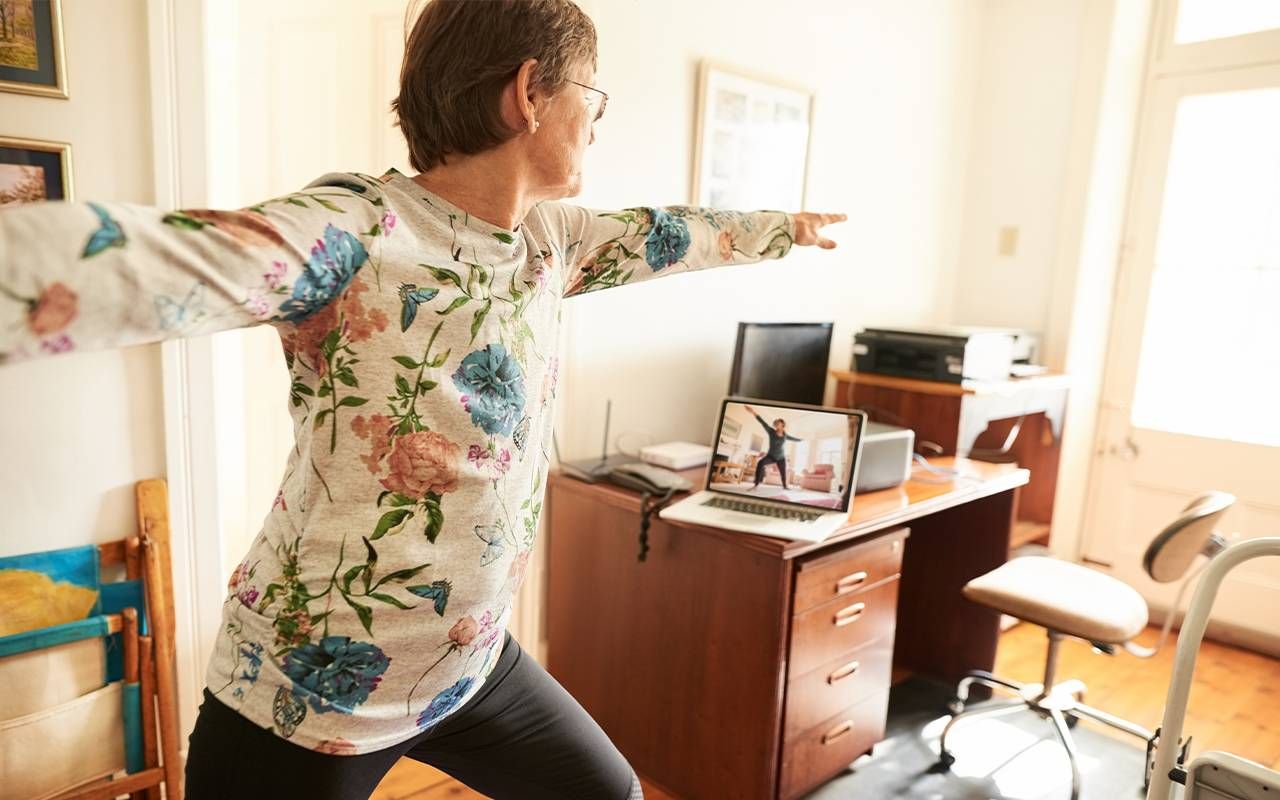Kegel Olympics: What I Gained From Pelvic Floor Physical Therapy
Learning to do internal contractions for stronger and sustained pelvic floor muscles
I visited my gynecologist, complaining that a bulge had appeared that wasn't previously present. She informed me it was my bladder making itself known. One thing I have learned about internal organs is that it's best if they go about their business unnoticed. I was experiencing a level-three organ prolapse. My mother had her bladder lifted twice, and I thought that my time had come for that same life passage.

The prolapse happened during the height of the COVID pandemic, and elective surgery was not being scheduled because hospitals were filled with people dying of the virus. So my gynecologist offered a non-surgical solution, a diaphragm-like device called a pessary that she inserted to support the sagging organs.
Sagging is a common part of the aging process, both internal and external.
Sagging is a common part of the aging process, both internal and external. Over 50% of women experience some degree of pelvic organ prolapse, and over 12% seek surgery to correct it. Without the option of surgery, I continued for over a year with the pessary.
Struggles With a Pessary
The first mention of pessaries in medical history dates to ancient Greece when Hippocrates soaked half a pomegranate in vinegar to hold up prolapsed organs. Fruits, vegetables and stones have been used as pessaries in different times and cultures. My pessary was medical grade silicone, but I'm not bragging.
I visited the gynecologist every three months to have the pessary removed and put back in. These sessions were followed by my apologies to the nurses in the nursing station outside the door for my overreacting screams. Over time, I began to develop infections. Once the pandemic restrictions eased, I made an appointment with a pelvic surgeon to discuss lifting my bladder.
In an unexpected and refreshing conversation, the pelvic surgeon said she did not recommend surgery. I wasn't used to surgeons advising against surgery. She explained that unless I addressed the weak pelvic muscles, the organs would prolapse again and surgery would have to be repeated, as it was for my mother.
The surgeon advised that, unless the prolapse made my life intolerable, I should try another option: pelvic floor physical therapy. She also said that if I eventually decide to have surgery, muscle conditioning would only improve the success of the surgery.
I left the surgeon's office with a prescription for physical therapy and began calling facilities to set up treatment. My first inkling that this was no ordinary process came when I discovered that not all facilities provided this therapy. With no place to go near my home, I settled on a facility near my workplace.
The Impact of Physical Therapy
I scheduled an appointment with a specialist, Dr. Shana Anthony. I looked up her credentials and read that she had a doctorate in physical therapy with specialized post-graduate clinical training. I was informed by the receptionist who made the intake appointment that some internal examinations would be required, information I chose to dismiss immediately.
Unless I addressed the weak pelvic muscles, the organs would prolapse again, and surgery would have to be repeated.
I showed up for my first appointment in stretchy clothing (that could double for office wear when I left my appointment). I expected to be led into a room with mats on the floor. Instead, I was shown to an examining room and told to put on an examination gown. While I waited for the therapist, I stared at a huge model of the pelvic floor organs.
Finally, Dr. Anthony arrived and asked me about any physical condition that could affect my therapy. I told her I suffer from vertigo, have a fragile back, don't love exercise and plan to go to work after therapy, so I don't want to sweat. The physical therapy facility was still maintaining COVID mask protocols, but I could see the twinkle in her eyes and hear the chuckle in her voice when she said, "All right then, let's get started."
Dr. Anthony explained that the internal exam was necessary to assess the extent of the prolapse and monitor progress. She needed to show me which muscles I had to contract to begin to strengthen them. She instructed me to contract this muscle and that, which was as unfamiliar as it would be for me to wiggle my ears.
Kegels as Olympic Sport?
I began to find the right muscles and how to isolate the contraction. These internal contractions are called Kegels. She placed a hand on my abdomen or thigh to see if I was cheating by engaging other, more familiar muscles. She also had me breathe normally as I went through my paces.
After several weeks, I progressed to using a biofeedback device inserted internally to register the strength and length of contractions. As Dr. Anthony counted the repetitions and the time to hold, it gave my mind time to wander. I thought that Kegel contractions could be a woman's Olympic sport. It's far more critical to physical conditioning than snowboarding.
Moreover, the biofeedback machine results could be projected on a big screen. Women could be judged on how well they could maintain steady breathing, isolate the pelvic muscles and reach for the gold in strong and sustained contractions.
I thought that Kegel contractions could be a woman's Olympic sport.
When my Kegels reached the score of a perfect Olympics ten, we moved the exercising to a Pilates gym for overall core conditioning. I was put on various machines to do leg presses, lifts, and circles. Dr. Anthony placed her hand under the small of my back and coached me to press down to reduce the curvature in my spine and tilt my pelvis up.
At one point, I stopped pressing and lifting to tell a story about what my granddaughter had done that past weekend, after which I confessed I was giving myself a break. We were no longer wearing masks and had a good laugh as Dr. Anthony quoted me verbatim from my intake appointment, "I don't love exercise and I don't want to sweat."
When I first began practicing Kegels at home between therapy sessions, I experienced back pain. So I incorporated the Kegels into my morning yoga routine to counteract the contractions by stretching. I did them in three positions: lying, standing, and sitting.
To the mutual surprise of Dr. Anthony and myself, I became a dedicated student of her coaching. Unfortunately, I had a setback after suffering from a persistent cough; I was told that coughing is as bad as jumping on a trampoline for prolapse. That also meant I had to stop jumping on my granddaughter's trampoline.
After nearly a year of physical therapy, I received a call from the facility saying that Dr. Anthony was cutting back her schedule and couldn't see me regularly. The receptionist asked if I wanted to make an appointment with someone else. I thought about it briefly and said, "No thank you. I've got this."


